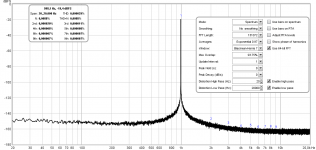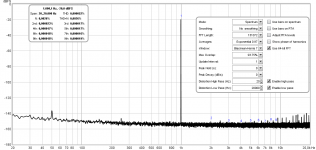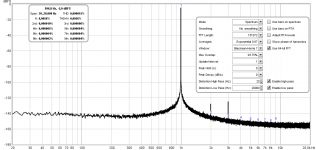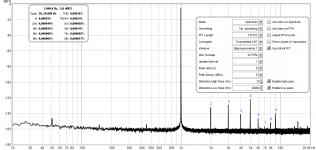It may be a good idea to explore ( those who are interested in RTX) bulk discount as a specific GB in Diyaudio as this forum had helped in getting RTX Product out. Also it would help RTX get a feedback on its bugs , enhancements if any or specific application development.
kannan
kannan
as another person who would like one of these units but missed out on Jens' fantastic pre-sale group buy, I agree with Edmond that Nikon has a great idea!
so, has anybody actually approach RTX and asked about this?
i would, but i don't think that i received a response to my request for a quote for a unit yet.
mlloyd1
so, has anybody actually approach RTX and asked about this?
i would, but i don't think that i received a response to my request for a quote for a unit yet.
mlloyd1
We should ask quote for a quantity. If there is a discount for say 10 or 20 units we might try to run a second GB. It might not be as cheap as the pre-sale GB, but still cheaper than getting a single unit.
D.
It may be a good idea to explore ( those who are interested in RTX) bulk discount as a specific GB in Diyaudio as this forum had helped in getting RTX Product out. Also it would help RTX get a feedback on its bugs , enhancements if any or specific application development.
I guess that was the whole idea behind the group buy, or at least part of it. RTX and the rest of the world gets honest feedback about the new analyser from an open and knowledgable community. That's a great way to optimize the product and to build a good reputation, I guess.
i see that RTX actually did respond to me.
they just responded so quickly that i overlooked it !

so, i asked a followup about discounts on quantities of 10-20 units.
we'll see what happens ...
mlloyd1
they just responded so quickly that i overlooked it !
so, i asked a followup about discounts on quantities of 10-20 units.
we'll see what happens ...
mlloyd1
as another person who would like one of these units but missed out on Jens' fantastic pre-sale group buy, I agree with Edmond that Nikon has a great idea!
so, has anybody actually approach RTX and asked about this?
i would, but i don't think that i received a response to my request for a quote for a unit yet.
mlloyd1
@ Chris and mbrennwa,
Whether it's worth $2495 depends on your needs and on the equipment you already have at your disposal. As I have already a couple of sound interfaces, to me it means that the RTX6001 will improve my current measurement floor by say 10dB. Is that worth $2495? In my case, I don't think so.
Cheers, E.
I agree that 10dB is not worth $2495 in many situations. But what about distortion? What about the voltage range (from millivolts up to 150 Volts!)? And then there's the easy peasy level control, which is so much better than fiddling with the typical soundcard setups that will never allow accurate and reproducible levels. Oh, and it's built like a tank (so it will survive a while around me).
Overall I don't strictly need the RTX. But I really enjoy working with this thing!
I want to avoid distraction in this thread. But request comments on post #1432 DIY Audio Analyzer with AK5397/AK5394A and AK4490
Please post to this thread
Hearing strange distortions
Any advise on why an isolated USB seems to still show something leaking on to the balanced DAC outputs.
thanks
Please post to this thread
Hearing strange distortions
Any advise on why an isolated USB seems to still show something leaking on to the balanced DAC outputs.
thanks
I had similar problems with an in PC setup with a Millett Sound Card Interface and the culprit turned out to be common mode noise injection into the AC line from the PC SMPS, common mode noise on the USB (used for power only). There are many ways for noise to get into your measurements including USB isolation that is not as good as you thought, injection through grounds and power wiring and electrostatic pick up due to poor shielding.
I was able to achieve a 20dB improvement with shielding in the front end, isolation transformers on audio and AC power as well as lots and lots of ferrites on USB, audio and AC wiring. All audio between the sound card (M-Audio 24192), transformers (WE REP-111C) and the interface was balanced and shielded. It was a lot of work done step by step.
I was able to achieve a 20dB improvement with shielding in the front end, isolation transformers on audio and AC power as well as lots and lots of ferrites on USB, audio and AC wiring. All audio between the sound card (M-Audio 24192), transformers (WE REP-111C) and the interface was balanced and shielded. It was a lot of work done step by step.
$2495
The main reason I would have bought an RTX for $1200, is to verify whether it can cooperate with DiAna, but I'm not going to spend $2495 solely on a compatibility check. No way.
Cheers,
E.
As for that "10dB", I meant noise as well distortion. As for the voltage range, currently I'm using a passive attenuator in front of the sound card and can easily measure at levels between 50mV and 100V. Without any further tricks and hocus-pocus, the measuring floor is -120dB. Including "hocus-pocus" I can get it down to as low as -170dB. Do I really need an RTX6001 and throw away my L22's? No, for accurate and low level distortion measurements, I need DiAna.I agree that 10dB is not worth $2495 in many situations. But what about distortion? What about the voltage range (from millivolts up to 150 Volts!)? And then there's the easy peasy level control, which is so much better than fiddling with the typical soundcard setups that will never allow accurate and reproducible levels. Oh, and it's built like a tank (so it will survive a while around me).
Overall I don't strictly need the RTX. But I really enjoy working with this thing!
The main reason I would have bought an RTX for $1200, is to verify whether it can cooperate with DiAna, but I'm not going to spend $2495 solely on a compatibility check. No way.
Cheers,
E.
The main reason I would have bought an RTX for $1200, is to verify whether it can cooperate with DiAna
I think the guys from RTX are cooperative enough to lend you some unit for testing purposes, not speaking that sooner or later they'll have to pack the hardware along with some good software. Who knows, probably this could be a good way for cooperation. Of course we - the ordinary RTX users - will also benefit from this
I had similar problems with an in PC setup with a Millett Sound Card Interface and the culprit turned out to be common mode noise injection into the AC line from the PC SMPS, common mode noise on the USB (used for power only). There are many ways for noise to get into your measurements including USB isolation that is not as good as you thought, injection through grounds and power wiring and electrostatic pick up due to poor shielding.
I was able to achieve a 20dB improvement with shielding in the front end, isolation transformers on audio and AC power as well as lots and lots of ferrites on USB, audio and AC wiring. All audio between the sound card (M-Audio 24192), transformers (WE REP-111C) and the interface was balanced and shielded. It was a lot of work done step by step.
Thanks Kevin.
The DAC uses linear regulated power supplies. EXAU2I isolates the USB from the I2S fed to the DAC.
The tall noise grass seen is somehow only seen when the DAC is connected to USB port on my laptop (another laptop does the same). If i understand your comments right, common mode noise is getting into the DAC circuit when the USB port is connected.
Any idea why the noise grass seems to vanish from the plot when tested with the 1KHz tone? Is that merely a measurement artifact?
Please post to the below thread to keep this one clean. Thanks
Hearing strange distortions
Balanced Victors vs. RTX generator
Just a fast comparison between the RTX6001 (loop-back) and a battery powered Victors generator in balanced configuration.
RTX input at 10 dBV for both measurements.
RTX output at 10 dBV.
Victors output at lowest power.
Just a fast comparison between the RTX6001 (loop-back) and a battery powered Victors generator in balanced configuration.
RTX input at 10 dBV for both measurements.
RTX output at 10 dBV.
Victors output at lowest power.
Attachments
- Home
- Design & Build
- Equipment & Tools
- DIY Audio Analyzer with AK5397/AK5394A and AK4490



